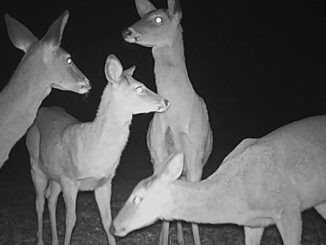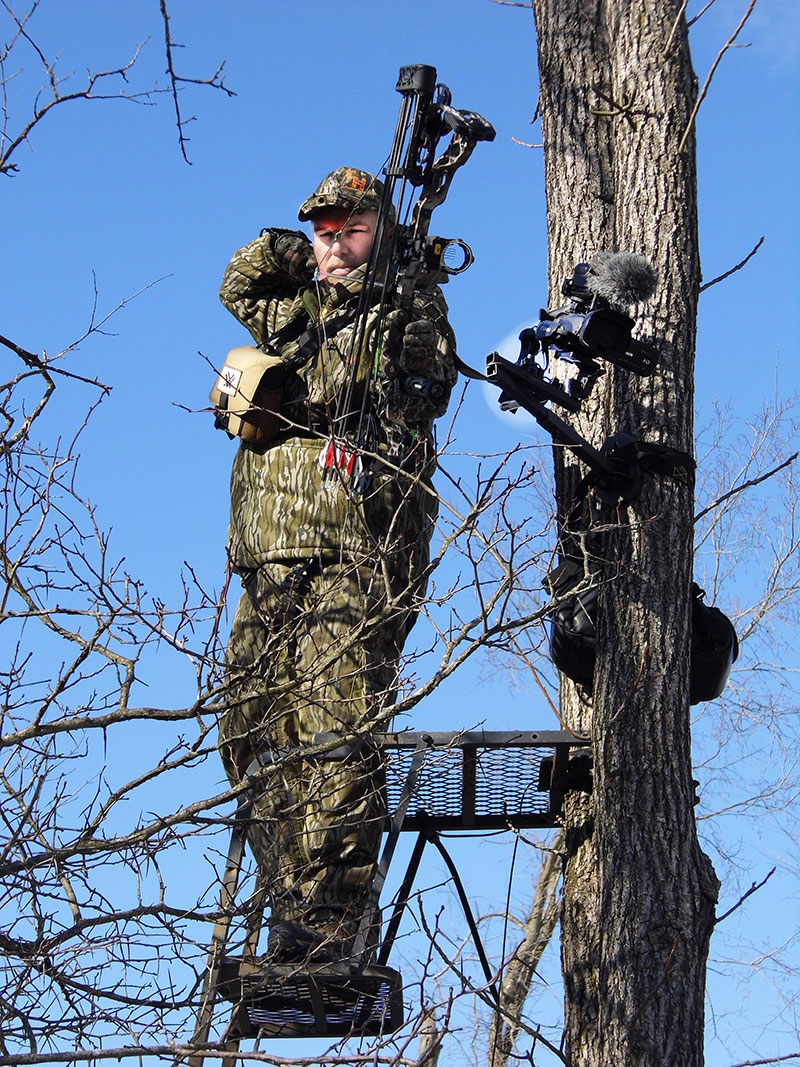 Videoing isn’t just for fun; it can make you a better hunter
Videoing isn’t just for fun; it can make you a better hunter
Many hunters have discovered the value and enjoyment in self filming their hunts. These hunters probably have taken numbers of deer.
They are often interested in another level of hunting.
In self filming, they can:
- see any mistakes they may have made as bucks come within range
- learn if the bucks have presented better shots than the ones taken
- watch the flights of their arrows and slow down the videos to learn what their arrows have done from the time they’ve left their bows until the arrows enter the deer
- realize that sometimes they may not have the opportunity to take nice bucks, if they can’t get the bucks’ photos on their cameras
- have the opportunity to learn more about how to hunt deer better
Some hunters may think they’ll make money having YouTube channels show their videos and receive invitations from landowners, guides and lodges offering them free hunting. This scenario seldom happens, although if you enjoy self videoing, you’ll do it anyway.
Loving to self video
Steven Reinhold of Nova, Ohio, is one of many hunters who has discovered the excitement of filming his deer hunts to share them on the Internet with friends and other interested hunters. Reinhold’s videos titled, “True Life Hunting Adventures,” are on his YouTube channel and MossyOak.com. Reinhold started out in the TV business in 2008.
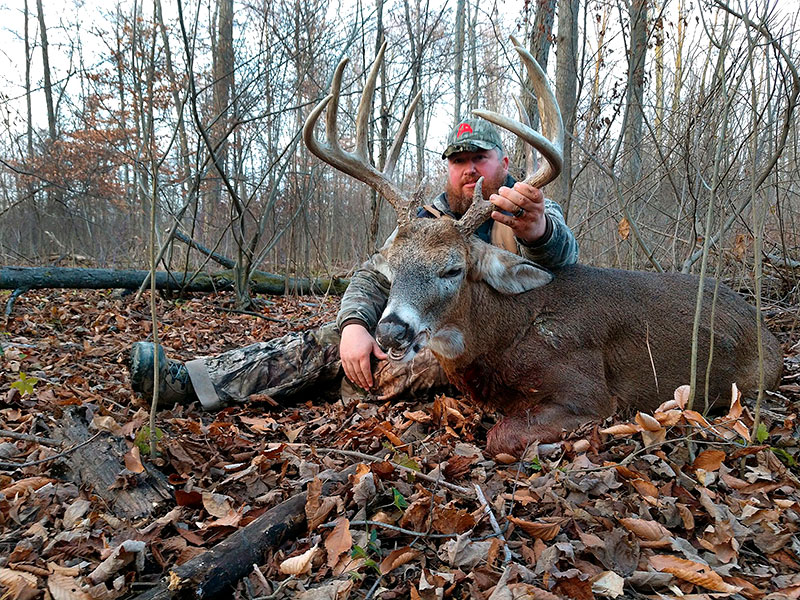
“I dropped out of that business to spend more time with my children,” he said. “My older son, Mason, then wanted to get back into the videoing business in 2018, and we started self videoing again.”
“True Life Hunting Adventures” covers hunting waterfowl, whitetails, hogs, predators and some exotic animals in Texas. Reinhold’s basically an archery hunter for whitetails.
“Bowhunting’s so much like a chess game,” he said. “You may think you’ve figured out a buck and believe you can go out that day and shoot that buck from your tree stand or ground blind. Perhaps the weather, the wind, the moon and/or the time of the rut all tend to indicate that this day is when you’ll win. Those factors lined-up for success are in your favor, but that buck you’ve thought you can take that day may not show-up. Then he’s beat you again, and you’ll have to come up with a new strategy for the next day’s hunt.”
Reinhold and Mason and their friend and photographer, Tony Artino, all self-film their hunts by sitting in tree stands or ground blinds by themselves. They’ve discovered getting quality footage can be very challenging. They deer “hunt” 365 days a year, putting out minerals and trail cameras, hanging tree stands and studying trail camera pictures to locate bucks to hunt the upcoming season.
How to set-up
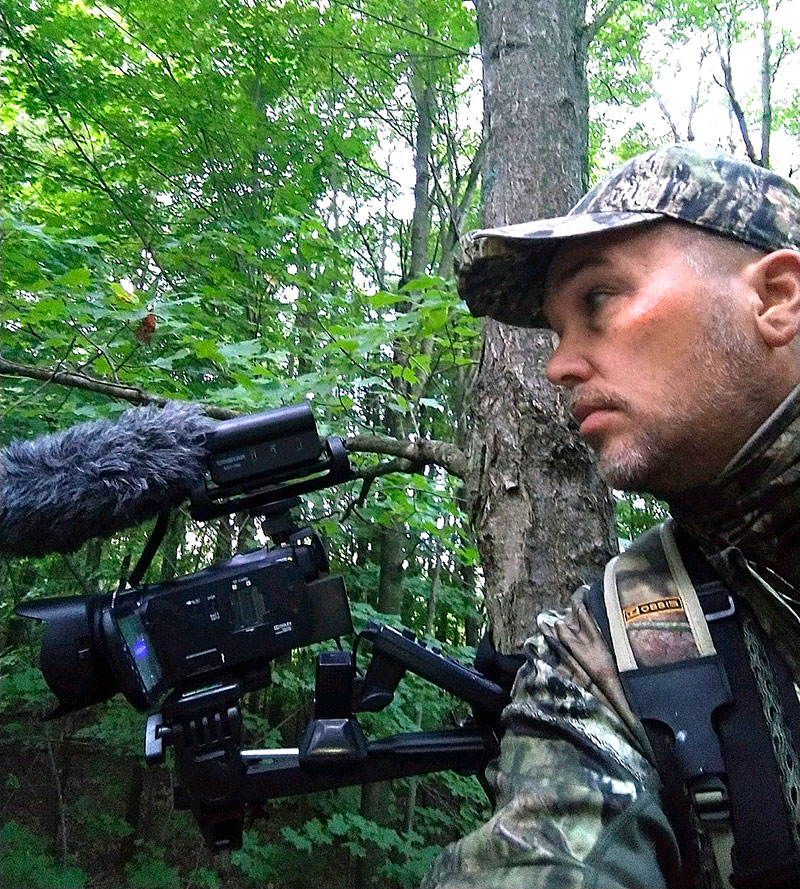
Self filming your hunt requires a learning process to be successful. You must:
- focus on the animal first
- draw your bow, release your arrow and get the kill shot
- be willing to not take an animal, if you can’t set-up and focus the camera without the animal spotting you.
Reinhold said, “I’ve had animals I could have shot but haven’t because I couldn’t get the camera focused before I took the shot. Or, the deer may have been either in a position where I couldn’t take the shot, or he was out of range once I got the camera focused on the deer. Our number one rule of thumb for our film crew is if we can’t get the animal on film the way we want, then we don’t take the shot. Every archer and each gun hunter understands that the weapon he hunts with needs to become and feel like it’s a part of his body. The connection an archer has with his bow, his arrows, his sight pins and his broadheads is the same kind of connection a person who’s self filming his hunt must have with his cameras and his camera arm to successfully self film.”
People often ask Reinhold how he sees through the camera as the deer’s coming in, stays focused on the deer and prepares to shoot. He always sets his camera arm on the left side of his tree stand or ground blind. He’s a right-handed shooter. His camera has a viewfinder on its side. Reinhold can see what the camera sees as the deer comes in to his stand site. He has his bow with an arrow nocked in his right hand and looks at the viewfinder to stay focused on the deer. He zooms out and in on the deer, depending on how close or how far away the deer is.
What equipment is required?
Here’s a quick list of what you’ll need to do this the right way.
- Lighted Nock: Most TV producers and hosts use lighted nocks to allow the video and TV viewer, as well as the shooter, to see exactly how an arrow flies to a deer.
- Primary Camera and Camera Equipment: Reinhold names his Canon Vixia HF G20, a small, high-definition camera, his main camera, with its 6 hours of recording time and the flexibility of an extensive optical zoom. He uses a plug-in Takstar shotgun microphone with a windscreen that attaches to the top of the arm. This entire setup is lightweight. Reinhold has used a Scorpion Arm and a Muddy Outfitter camera arm before to help film a deer’s recovery. Today he likes the all-aluminum Phantom Arm that his son, who’s a welder, makes. Reinhold’s crew uses the Moon Grip stabilizer handle for digital SLR cameras when blood trailing.
- Remote Controller and Fluid Head: He uses an LANC remote controller with his main camera to move it. The fluid head on which the camera rests is vitally important to allow the camera to move freely when self filming, instead of bouncing or moving and stopping. He likes a Manfrotto Head.
- Tactacam Camera: Attached to the stabilizer on Reinhold’s bow is a weather-proof Tactacam camera with ultra HD resolution.
- LIDCAM Camera: Reinhold and his team also use this camera, a hands-free, digital, 4-ounce camouflaged camera that attaches to the bill of a ball cap. It gives the hunter a different view of the arrow in flight, and where the arrow impacts the deer. You can’t zoom in with this camera, but it does enable you to get a different view of the hunt. Reinhold likes that it has a micro-SD card and an USB cable to recharge the camera.
Techniques for self filming hunts
Reinhold said, “Our LIDCAM camera often gets the best bowhunting footage of a deer coming in, our making the shot and seeing the deer take the arrow and run off. Our LIDCAM also has HD quality, is very versatile and is especially useful for hunting in rainy weather.”
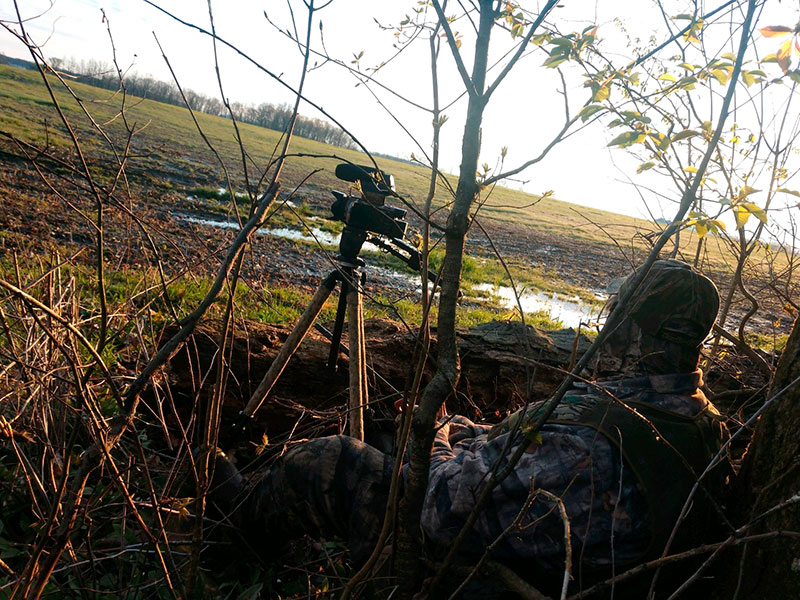
“The best way to learn to use all this equipment is as soon as deer season ends, start practicing with it and use this video equipment to film deer,” Reinhold said. “Don’t expect to be successful filming every time a deer comes within gun or bow range. We let more deer go than we video and shoot. We’ve learned the best time of the year to hunt bucks for self-filming is during the rut. But then bucks often don’t come in slowly enough or stop long enough for you to get the buck on film and take the shot.”
Another advantage of self-videoing is you don’t have to spend much money to get good footage. Many outdoorsmen who are thinking about self-videoing think they have to buy all the latest and greatest video cameras to film with, but Reinhold said, “All you need is a camera with an SD card. You can plug that SD card into your laptop or your home computer to see your footage.”
Editing your videos
Reinhold’s editor, Mark Guy, takes the team’s footage and crafts a 28-minute show with commercials in it.
“We have three videographers self-filming hunts throughout the year,” Reinhold said. “Young people today know so much about editing video that they can do it far better and faster than me. They do so much editing for YouTube for themselves that an abundance of good editors are available.”
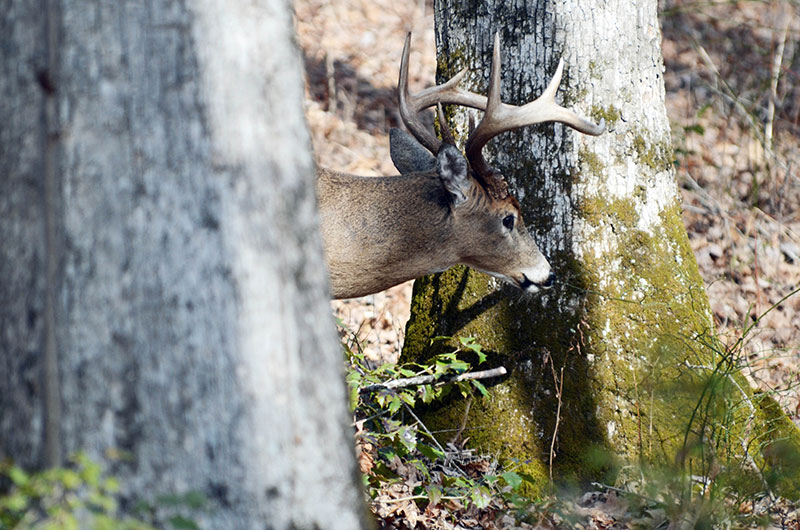
Also check with the journalism departments at your local junior college or university to identify students who need money and resume credentials. These students will know how to edit videos and how to make them appropriate for various social media platforms.
Reinhold said that a tremendous number of self filmed outdoor shows are on YouTube.
“Two to 10 outdoor TV shows were available on TV in the past,” he said. “The growth of YouTube and social media and better quality video cameras costing less money and being easier to film with means filming has become so simple and inexpensive that almost anyone can do it. Outdoorsmen can watch deer hunts on their phones, their tablets and/or their desktop and laptop computers. They can take these devices with them anywhere they go. So, anytime they’re waiting somewhere, riding in a car or flying, they can watch outdoor shows.”
Numerous hunting videos are available by searching YouTube. Hunters can learn how to use self filming equipment from the various camera and equipment websites.

